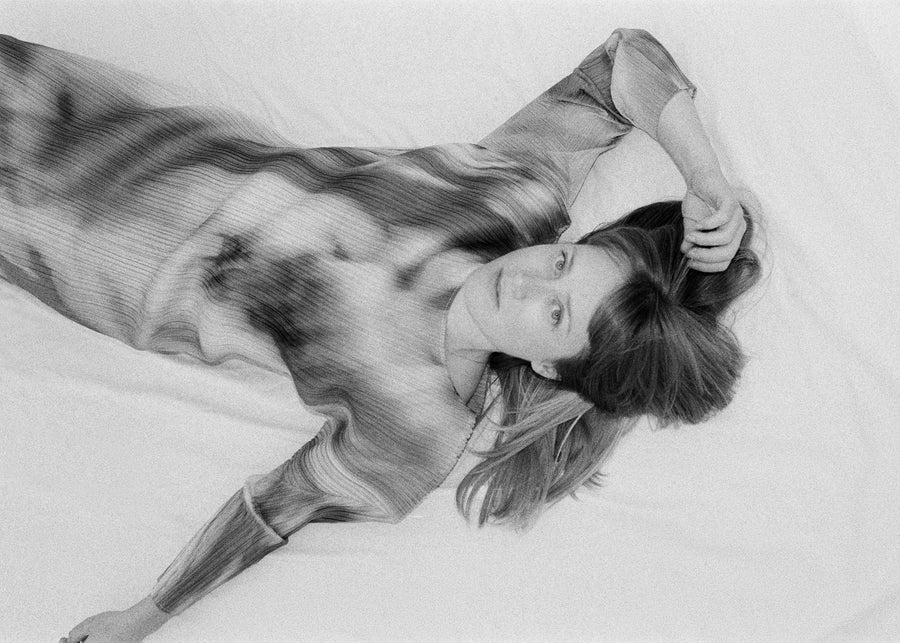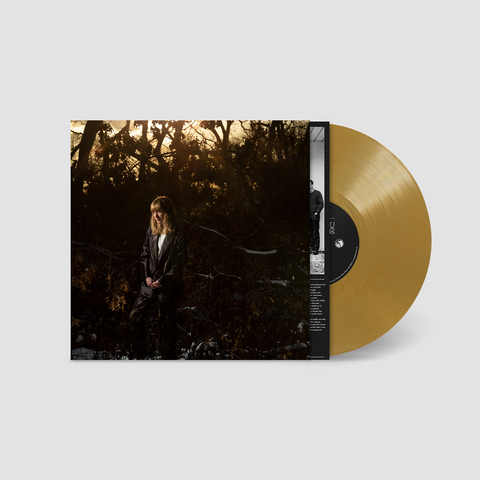The Weather Station
Contact

Bio
It takes only 10 seconds for Tamara Lindeman to pull us to the floor on Humanhood, the seventh and most arresting album she has ever made as The Weather Station. “I’ve gotten used to feeling like I’m crazy—or just lazy,” she sings at the start of “Neon Signs,” her voice at once a soft whisper to a confidant and a full-throated confession to a crowd. “Why can’t I get off this floor? Think straight anymore?” If you don’t know this feeling, consider yourself blessed, because it seems these days like our true modern malaise, that unbound sense of not knowing how or what it is we’re supposed to contribute to this fractious world, or if we even have the energy or will to try. That disoriented sense is the emotional throughline of Humanhood, written during one of the most difficult periods of Lindeman’s life and rendered with a rock band with improvisational chops just as she began to recover by reckoning with a complicated truth: Sometimes, life simply tries to dismantle us, and we must accept that in order to survive.
From the outside, 2022 likely appeared a banner year for Lindeman. Her 2021 album Ignorance—a deeply personal but widely resonant reflection on climate change, or how we’ve learned to live alongside our own existential undoing—was one of that year’s most celebrated records. 2022, then, was a time of touring, travel, and activism alongside the release of Ignorance’s more austere companion, the beautiful How Is It That I Should Look at the Stars. But at an ostensible new professional peak, she was also going through a mental health crisis she mostly kept hidden. As Lindeman has done for at least 15 years, she turned to songwriting, combining pain, confusion, and flickers of distant hope with ideas about advertising, capitalism, and how we’re meant to feel very specific ways into pages and pages of lyrics. In the past, Lindeman mostly wrote about her past, turning backwards to gain perspective. But for Humanhood, she worked with the present as she tried to endure it. Humanhood, then, radiates with new urgency—and emerges as a sort of tether, offered up here for any of us else feeling disconnected from the vertiginous reality of right now.
In the fall of 2023, Lindeman gathered six musicians at Canterbury Music Company, where she had recorded Ignorance and How Is It That I Should Look at the Stars, alongside co-producer Marcus Paquin. Several of these players—drummer Kieran Adams, keyboardist Ben Boye, percussionist Philippe Melanson, reed-and-wind specialist Karen Ng, and bassist Ben Whiteley—had worked together but never in this specific arrangement or context. Lindeman, after all, wanted to hear the sudden sparks made by these new encounters, to witness everyone react in real-time to the songs and sketches she supplied.
There were many songs left intentionally unfinished, so that the band could respond to what she was saying, singing, and playing rather than strict forms she had already put around it all. They could join her in the fog and fatigue, then, in the sense of being so disoriented that even being in something as ordinarily unsettling as a mere upside-down seemed aspirational. The playing perfectly captures that sense of vertigo, with hiccupping flutes and cantering drums that suddenly fumble for a way forward, with drifting drones and granulated piano and banjo that search busily for a melody they’ve lost. Other friends eventually added their own bits, like old-time updater Sam Amidon, ace guitarist James Elkington, and textural magus Joseph Shabason. They all drop into these fugues, shaping the hazy unease that is so endemic these days into tangible sound. In the final stage, mixer Joseph Lorge helped make sense of these musical webs through thoughtful listening and deliberation. Rendered as a front-to-back linear journey, the result unfolds as a near-continuous piece of music, with interstitial instrumentals fading into and out of the songs.
Much of Humanhood is a riveting and real document of what it means to be lost, to be hamstrung by confusion, unease, and grief for a period so long you begin to wonder if there is an end. It is rendered in linear fashion, so that we start alongside Lindeman on the floor and slowly try to peel ourselves from it. There’s the spellbinding “Body Moves,” which toggles between an organ-backed hymn and a piece of elastic pop, the endless syncopations moving like a misfiring heart. It’s a song about the way we lie to ourselves and insist everything is OK, even as we’re breaking down from the inside. An anthem of escape, “Window” finds Lindeman actually crawling out of one, trying to find a way to anything that hurts less, that actually feels sustaining. The slashing guitar and spiraling electronics conjure a panic attack, the brain demanding answers. “I can’t explain right now,” she sings in a sudden tumble during one of the album’s most gripping moments, “just that I’m leaving.” Away, forward, better—what other explanations need there be?
Traces of promise emerge slowly across Humanhood. Late in the record, above the near-gamelan rhythm and spiderwebbing guitar that frame the title track, Lindeman goes down to Toronto’s lakeshore and dives in, pulled into the current of reality by the grip of the cold and the sight of cottonwood and vine. Even amid urban landscapes, nature can redirect our focus, remind us that our problems are not limited to our experience. In the song, Lindeman describes a moment of understanding she is doing the best she can—that we all are, really. Sometimes it is enough just to keep one’s head above these choppy waters. There is a hidden and necessary bit of climate change commentary here, too, as Lindeman recognizes that we’re all dealing with ourselves as the world totters near a breaking point. None of it is easy or precedented. In that sense, Humanhood mirrors Ignorance, as we all try to navigate a world disrupted.
And then during “Lonely,” as submerged and forlorn as Humanhood ever sounds, Lindeman paradoxically starts to trace a way toward healing: admitting the old hurt, looking for new connection, and, most of all, walking down to the Tranzac's Southern Cross Lounge to hear friends play music. “A simple recipe—this medicine, really—that can let anything in,” she sings, her feather-light voice drifting now toward resolve. She’s doing that in real time.
The clearest vow of motion, though, comes with the finale and longest song here, “Sewing.” For Lindeman, the hardest part of this whole ordeal might have been accepting that deeply personal suffering happens, that it is entirely human to feel as if you’re detached from yourself, from your world, from your humanhood. Most of us have been there, maybe all of us. So during “Sewing,” as piano slowly rises over the drums’ gentle trot, we hear her stitch together her life—bad days to good, shattering pain to little triumphs. It all constitutes existence. “All I can do is sew it into this undulating thing, whatever it is I’m making with you,” she sings, voice so faint it’s as if she were whispering to the air itself. “A life—I’ll sew in tonight, too.”
The band lifts into a rhythmless, roaring crescendo, then goes silent. That was supposed to be the end, but Lindeman kept singing. They drifted back in with her. “I’m taking pictures of the sky again,” she offers. “I don’t know why. I guess I wanted to.” She closes there with a hint of volition, however slight it may sound—up off the floor and ahead into life, no matter what shape that strange quilt may yet take.
Tracks
Tour Dates
- Choosing a selection results in a full page refresh.
- Press the space key then arrow keys to make a selection.



